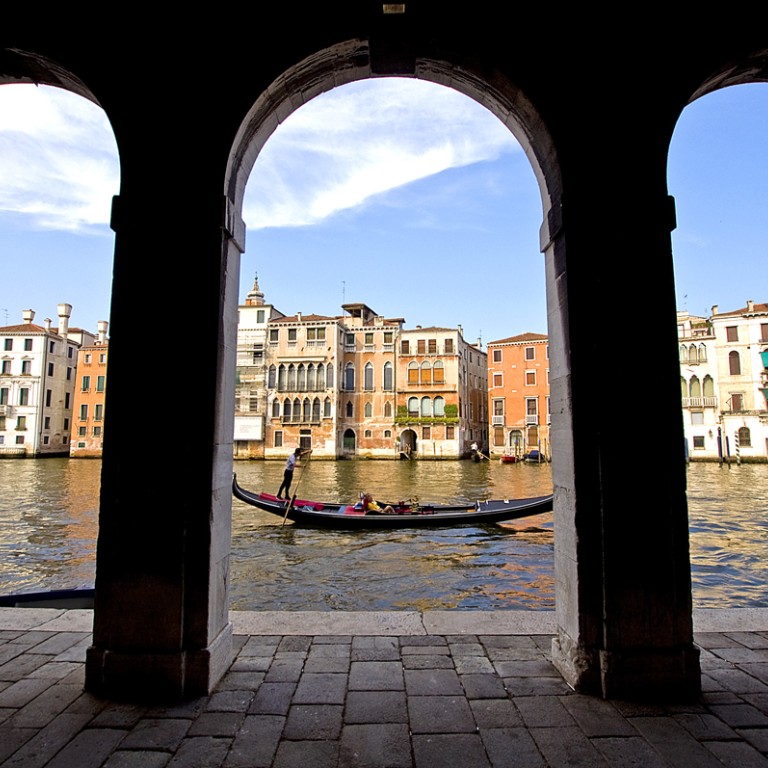
Overrun Venice and underrated Ljubljana a study in contrasts
Perennially popular Venice and under-the-radar Ljubljana are geographically close yet poles apart. Words and pictures by Tim Pile.
It’s standing room only on the 5am train to Venice and I’m the sole tourist in a carriage full of blearyeyed commuters.
Predawn starts are never easy but sometimes the effort pays dividends. The warren of alleyways that link Santa Lucia Station, the Rialto Bridge and St Mark’s Square are virtually deserted.
Europe’s budget airlines have created a surge in twocentre holidays. The days when a single ticket cost almost as much as a return have long gone and flying to one destination and back from another has never been easier. You don’t even have to use the same airline.
From London, you could head to Seville, Spain, for an Andalusian city break, then bake on the beaches of the Algarve in neighbouring Portugal before returning from Faro. Book a ticket to Prague and come back from Budapest or Berlin. You get the idea.
I’ve chosen to pair Venice with Ljubljana, in Slovenia, to see how tourism’s perennial overachiever compares with an underrated but up and coming alternative.

Venice feels familiar – even on a first visit. The cinematic quality of light; peeling pastel-coloured facades and streams of waterborne traffic will have you reaching repeatedly for your camera. It’s best to let the nocturnal workforce finish their less than photogenic chores before you start snapping though.
During peak season, day-trippers double Venice’s 60,000 population and the operation to keep the invading hordes fed and watered begins in the small hours. Unsightly municipal barges chug along the Grand Canal weighed down with LPG gas bottles and pallets stacked with beer, bottled water and bags of vegetables – as well as the previous day’s rubbish. It’s not quite how the artist Canaletto painted Venice. Presumably he wasn’t an early riser.
Gradually the ambience changes as the sun arcs higher. Venetians leave the stage to a skeleton crew whose job is to serve successive waves of sightseers.
As the crowds thicken, I find a seat at a canal-side cafe and stump up €8 (HK$84) for a coffee. Patchy Wi-fi and a soggy biscuit do little to console me.
A gondola ride is all part of the experience but be warned – those much-photographed actors in the Venetian drama; the gondolieri, hold all the cards. An imbalance of supply and demand means you’ll pay at least €80 to be punted along the canals for half an hour.
Rates soar if you throw in a crooner; which, after you’ve heard O sole mio murdered for the umpteenth time, may not be such a bad idea.

Things are no better on dry land. The city has long since breached its carrying capacity and local grievances are translating into action. A hotel tax was introduced in 2011 and plans to charge tourists an entry fee and refuse admittance to anyone without reserved accommodation are being considered.
The Queen of the Adriatic is steadily being loved to death – suffocated by the marauding masses and gondola gridlock. I feel unfaithful for leaving but I have another date. Ljubljana, which translates as “beloved”, is only a couple of hours away by bus and turns out to be the anti-Venice.
There’s a sense of The Truman Show about the orderly Slovenian capital. Smiling locals go out of their way to be helpful, houses are immaculate and crime is almost non-existent. Prices are reasonable and fresh produce in the market looks too perfect. You could be in Switzerland or Austria rather than a former republic of socialist Yugoslavia.
The pocket-sized city packs plenty in. Start at Republic Square, where Slovenian independence was declared after a 10-day war in 1991. Nearby is Preseren Square, with its statue of Slovenia’s greatest poet, France Preseren. Next follow the Ljubljanica River to Dragon Bridge, known by droll residents as Mother-in- Law Bridge.
Downstream, at Butcher’s Bridge, thousands of padlocks have been attached to the steel support cables.
The keys are then thrown into the river in declarations of eternal love, although, our guide jokes, combination locks are becoming a lot more popular.
Laid-back Ljubljana should feature in the “world’s most liveable city” rankings. Clean streets and clear air are enjoyed by locals who seem to spend much of their time relaxing at riverside restaurants. My morning latte costs just over €1, which is a pleasant surprise after Venice. And it’s safe to go out at night.
Late one evening, three well-built youths lurch unsteadily towards me in the pedestrianised old town.
Each is carrying a bottle of what looks like vodka but turns out to be mineral water.
“We’ve had too many beers so we’re rehydrating before bed,” explain the world’s most sensible adolescents.
After enjoying the lofty views from Ljubljana Castle, I ask the gift-shop staff about criminal activity in the city.
The only naughtiness they can think of is teenagers making too much noise at house parties and the odd stolen bicycle. “Well, if they don’t lock them, what can they expect?” one says.
I finish my tour at Lake Bled, which is a short drive from Ljubljana. Despite sounding like the sort of place where Dracula would have had a holiday home, the scenic stretch of water surrounded by the jagged Julian Alps is a jewel in a region of sublime natural beauty.
At the tourist office, an assistant hands over a map and warns me to expect crowds.
Crowds? She ought to spend a day in Venice.
